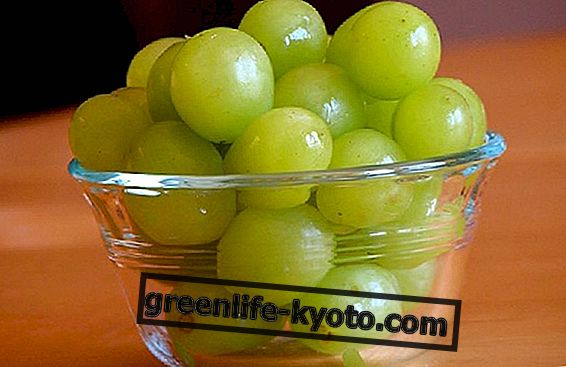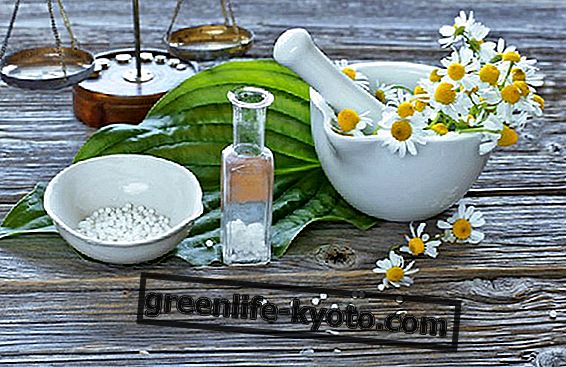Rhodiola ( Rhodiola rosea ) is a plant of the Crassulaceae family. Known to be a plant adaptogen with slimming properties, it is useful against stress, nervousness and tachycardia . Let's find out better.
>

Rhodiola properties
The roots of rhodiola have an adaptogenic action , antistress, favoring in general the learning and memory skills, well known by the Siberian folk medicine. These properties have been scientifically proven and are attributable to the presence of phenylpropanoid glycosides, in particular salidroside and rosavidin, whose chemical structure is similar to that of syringin (eleuteroside B), one of the active principles of eleuterococcus. Salidroside has also confirmed an anabolic effect, which increases work capacity and organic performance. Rhodiola produces an increase in the plasma concentration of beta-endorphins that can prevent hormonal changes indicative of stress.
Has cardioprotective effect, in the presence of tachycardia and palpitations due to anxiety, nervousness and allows to increase the resistance to effort and to reduce the duration of recovery times, after an intense exercise; improves the quality of sleep and is extremely effective in fighting insomnia.
The plant has slimming properties , due to the stimulation of some lipases able to accelerate the release of fats from the deposit tissues (lipolysis) to transform them into brown fat, so as to be easily synthesized, that is "burned" to produce energy. Furthermore, rhodiola is able to increase the levels of serotonin in the central nervous system by around 30%, a hormone that removes the obsessive desire for carbohydrates and performs a sedative-anti-anxiety action, greatly reducing anxious hunger. The glycosides contained in the root are also capable of increasing dopamine levels, a substance capable of transmitting a satiety signal to the CNS.
Soviet studies have shown that, acting as a stimulant on the female hormonal system, it is indicated in case of amenorrhea, as well as significantly improving fertility. On the male one favors the functionality and sexual performance in 70% of men suffering from erectile dysfunction or premature ejaculation. In Siberia, rhodiola is recommended as an aphrodisiac for those suffering from sexual disorders.
Method of use
INTERNAL USE
300 to 500 mg of dry extract, in the form of tablets or capsules divided into two sub-doses in the morning on waking and in the early afternoon.
The rodiola among the remedies against fatigue: discover the others

Contraindications of rhodiola
The intake of rhodiola can lead to cases of insomnia and nervousness, therefore it is contraindicated for those suffering from hypertension and cardiac disorders. Therefore, it is mandatory to seek medical advice before taking it.
Description of the plant
High plant from 5 to 35 cm whose numerous stems of fleshy consistency are born from a robust rhizome. The leaves are flattened, lanceolate and serrated.
The flowers, gathered in terminal inflorescences, have yellow, orange or red color and a pleasant perfume, which recalls that of the rose, to which it precisely owes its name. Rhodiola plants are dioecious, meaning that there are male plants and female plants.
The habitat of the rodiola
Plant that grows on sandy, rocky, cold and dry soils of the Siberian slopes, spontaneous in the northern European mountain areas (Scandinavia and Lapland) and North American (Alaska).
It grows at high altitudes (3300-5400 m.) In the inaccessible and rocky areas of numerous mountain ranges. It can also be found in the Alps and the Pyrenees. It prefers normal soils, well drained and exposed to the sun.
Background
Called in the areas of origin Rhosenrot which means: " golden root" the use of rhodiola has a legendary history. In Siberia there is a saying that those who regularly drink their infusion will live for more than a century. The root, used to improve physical performance and immune resistance and in general to improve health, was given as a bouquet to couples before marriage to encourage the birth of healthy children and since it was considered a powerful stimulant, it was part of the formulation of various love potions .
The Chinese emperors, who used the root to treat very different disorders and diseases. To improve their adaptation to high altitude, the people of Tibet integrated it into their diet while the Siberians used it to increase their resistance to low environmental temperatures.
The first scientific studies on Rhodiola date back to the first half of the last century, when several scientists, mostly Russians, began to observe the effects of this indigenous plant, but only in the early 1960s information on the benefits and properties of Rhodiola they have been made public in the western world.
READ ALSO
Rhodiola among the herbal remedies for depression
Other articles on rhodiola:
> Rhodiola and other plant adaptogens against stress
> Rodiola, ginseng and damiana among the aphrodisiac plants
> Rhodiola among the herbal remedies for weight loss
> Rhodiolus supplement, when to take it
Image | Wikimedia
In collaboration with Erboristeria del Pigneto













